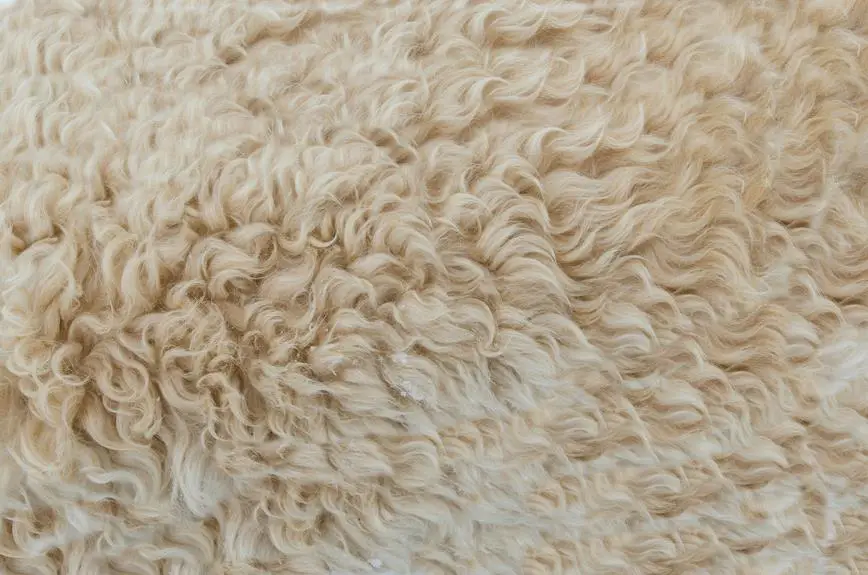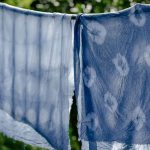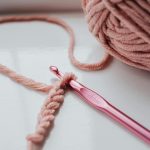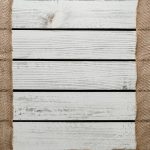When you're choosing between cambric and linen, you might find yourself weighing their distinct qualities carefully. Cambric offers a soft touch and lightweight feel, perfect for casual wear and bedding, while linen's durability and breathability make it a standout for warm weather. Each fabric has its own advantages, but the right choice often depends on your specific needs and preferences. So, what factors should you really consider when deciding between these two versatile fabrics? Exploring their unique characteristics could make all the difference in your selection.
Table of Contents
Overview of Cambric
Cambric is a lightweight, finely woven fabric that's often made from cotton or linen, known for its smooth texture and crisp finish. You'll find cambric commonly used in items like shirts, blouses, and table linens, thanks to its breathable nature. It drapes beautifully, making it a favorite for garments that require a bit of structure without being too heavy.
When you touch cambric, you'll notice how soft and pleasant it feels against your skin. This quality makes it an excellent choice for summer clothing, where comfort is key. Additionally, cambric holds dye well, allowing for vibrant colors and patterns, which can elevate your wardrobe or home decor.
One of cambric's standout features is its durability. Though lightweight, it withstands regular wear and washing, retaining its shape and finish over time. You'll appreciate that it's easy to care for, often requiring just a simple machine wash.
Overview of Linen
Linen is known for its durability and breathability, making it a popular choice for clothing and home textiles.
You'll appreciate its unique characteristics and the benefits it offers, such as moisture-wicking and temperature regulation.
Plus, understanding the linen production process can give you insight into why it stands out among fabrics.
Linen Characteristics and Benefits
Known for its durability and breathability, linen offers a unique blend of comfort and elegance that enhances any wardrobe or home decor. This natural fabric, derived from the flax plant, has some standout characteristics that make it a favorite choice among many.
Here are four key benefits of linen:
- Temperature Regulation: Linen keeps you cool in the summer and warm in the winter, making it ideal for year-round use.
- Hypoallergenic: If you have sensitive skin, linen's natural fibers can reduce irritation and allergies, making it a great option for bedding and clothing.
- Long-lasting: Unlike other fabrics, linen becomes softer with each wash while maintaining its strength, ensuring it'll last for years.
- Eco-Friendly: Linen is biodegradable and requires fewer pesticides and water to produce, making it a sustainable choice for the environmentally conscious.
Linen Production Process Explained
The journey of transforming flax plants into beautiful linen fabric involves several essential steps that highlight the craftsmanship behind this timeless textile.
First, you'll see that flax is harvested when the plants are fully mature, typically in late summer. After harvesting, the stalks undergo retting, where they're soaked in water or left in the field to break down the pectin that binds the fibers. This process can take several days, depending on weather conditions.
Next, you'll notice the flax is dried, and the fibers are separated from the stalks through a process called breaking. This is followed by scutching, where the remaining woody parts are removed, leaving you with the long, strong fibers. The fibers then go through a process called hackling, which aligns them and removes any short strands.
Once the fibers are cleaned and aligned, they can be spun into yarn. This yarn can be woven or knitted into linen fabric. Finally, the fabric is bleached, dyed, or finished to create the stunning linen you know and love.
Each step reflects a commitment to quality that makes linen a sought-after choice for textiles.
Key Differences
When comparing cambric and linen, you'll notice some key differences in their fabric composition and how you should care for them.
Understanding these distinctions can help you choose the right material for your needs.
Let's explore what sets them apart.
Fabric Composition Differences
Cambric and linen differ significantly in their fabric compositions, with cambric typically made from cotton and linen sourced from the flax plant. This fundamental difference leads to variations in texture, durability, and appearance, which can influence your choice of fabric for various applications.
Here are some key points to consider:
- Material Source: Cambric is primarily composed of cotton fibers, while linen is derived from the stalks of the flax plant.
- Texture: Cambric has a smooth, soft finish, making it comfortable against the skin. Linen, on the other hand, has a more textured, slightly crisp feel.
- Durability: Linen tends to be stronger and more durable than cambric, which can be important if you're looking for longevity in your fabric choices.
- Breathability: Both fabrics are breathable, but linen offers superior moisture-wicking properties, making it an excellent choice for warm weather.
Understanding these fabric composition differences can help you make informed decisions about which material best suits your needs for clothing, home textiles, or other projects.
Care and Maintenance
Caring for cambric and linen requires different approaches to maintain their unique qualities and prolong their lifespan.
Cambric, being a lightweight cotton fabric, is generally more forgiving. You can machine wash it in cold water and tumble dry on low heat. However, to keep its crispness, it's best to iron it while slightly damp. Use a medium heat setting to avoid scorching.
On the other hand, linen is more delicate and needs gentle handling. Always wash linen in cold water, preferably by hand or on a delicate cycle. Avoid using fabric softeners, as they can break down the natural fibers. Line drying is ideal, as it helps preserve the fabric's structure and reduces the risk of shrinkage. If you must use a dryer, opt for a low-heat setting and remove it while still slightly damp.
For both fabrics, avoid harsh detergents and bleach. Store them in a cool, dry place to prevent mildew.
With these care tips, you can ensure that your cambric and linen items maintain their beauty and functionality for years to come.
Advantages of Cambric
One major advantage of cambric is its soft texture, making it comfortable against the skin. This quality makes it an ideal choice for a variety of applications, from clothing to bedding. When you choose cambric, you're opting for a fabric that combines comfort with practicality.
Here are some specific benefits you'll enjoy:
- Breathability: Cambric allows air to circulate, keeping you cool in warm weather and cozy in cooler temperatures.
- Durability: Despite its lightweight feel, cambric is surprisingly strong and can withstand regular use and washing without losing its form.
- Ease of Care: Cambric fabrics are usually machine washable, making them low-maintenance and easy to care for in your daily life.
- Versatile Design: Available in various colors and patterns, cambric can fit seamlessly into any style, whether you're dressing up or keeping it casual.
Advantages of Linen
Linen boasts its own unique advantages, making it a popular choice for those seeking a blend of comfort and functionality in their fabrics. One of its standout features is breathability. When you wear linen, you'll feel cool and comfortable, especially in warmer weather, as it allows air to circulate freely.
Additionally, linen is incredibly absorbent, which means it can wick moisture away from your skin. This quality helps you stay dry and comfortable, even during hot days. You'll also appreciate its natural strength; linen fibers are tougher than cotton, giving it a longer lifespan and resilience against wear and tear.
Another benefit is its hypoallergenic properties. If you have sensitive skin, linen is less likely to irritate you compared to synthetic fabrics. Plus, it has a unique texture that softens over time, making each piece feel more luxurious with use.
Lastly, linen is eco-friendly. It's made from the flax plant, which requires fewer pesticides and less water than cotton, making it a sustainable option. So, if you're looking for a fabric that combines comfort, durability, and environmental consciousness, linen is an excellent choice.
Use Cases and Applications
How can you effectively incorporate linen into your wardrobe and home to maximize its benefits? Linen is versatile and can enhance both your style and living space. Here are some practical use cases to consider:
- Clothing: Choose linen shirts, blouses, and trousers for their breathability and comfort, especially in warmer weather. They offer a relaxed yet polished look.
- Home Textiles: Use linen tablecloths and napkins for dinner parties. They add a rustic charm and are easy to maintain, as they get softer with each wash.
- Bedding: Invest in linen sheets and pillowcases for a luxurious sleep experience. They regulate temperature and wick moisture, ensuring you stay comfortable all night.
- Accessories: Incorporate linen bags or scarves into your accessories. They're stylish and lightweight, perfect for casual outings or as a beach cover-up.
Frequently Asked Questions
Can Cambric and Linen Be Blended in Fabrics?
Yes, you can blend cambric and linen in fabrics. This combination can create a unique texture and enhance breathability while maintaining durability. Experimenting with different ratios lets you achieve the perfect balance for your needs.
How Do Care Instructions Differ for Cambric and Linen?
When you care for cambric, you can machine wash it on a gentle cycle, while linen requires cold water and air drying. Always check labels to ensure you're following the best practices for each fabric.
What Environmental Impact Do Cambric and Linen Production Have?
When considering environmental impact, you'll find that linen production generally requires less water and pesticides than cambric. However, both fabrics have benefits and drawbacks that can affect sustainability depending on their sourcing and manufacturing processes.
Are There Any Allergy Concerns Related to Cambric or Linen?
You might experience some allergy concerns with both fabrics, but they're generally hypoallergenic. If you have sensitive skin, it's best to test a small patch first to see how your body reacts before using them extensively.
Which Fabric Is More Sustainable: Cambric or Linen?
When considering sustainability, you'll find linen generally has a lower environmental impact. It's made from flax, which requires fewer resources and chemicals than other fabrics. So, if sustainability matters, linen's your better choice.
- How Does Ring Spun Cotton Affect Garment Fit and Shape Retention? - August 13, 2024
- What Are the Challenges in Producing Ring Spun Cotton? - August 13, 2024
- Is Ring Spun Cotton Suitable for Plus-Size Clothing? - August 13, 2024







